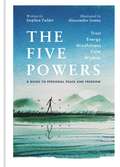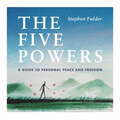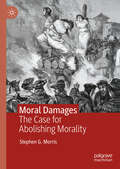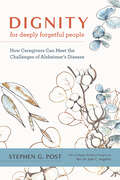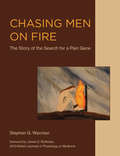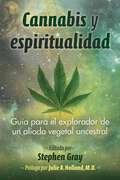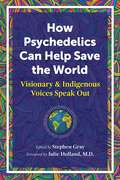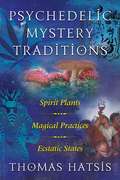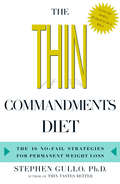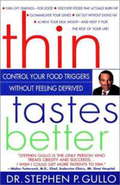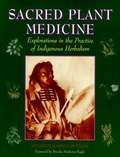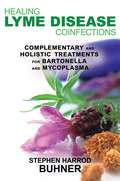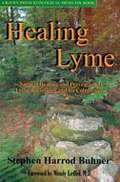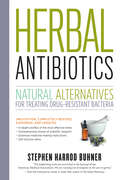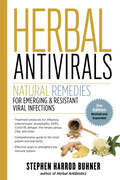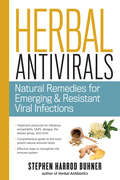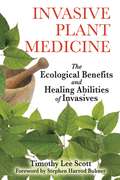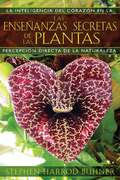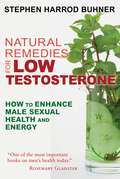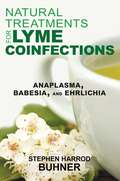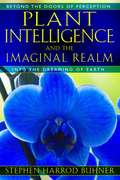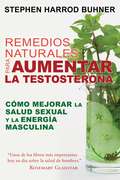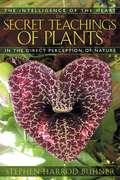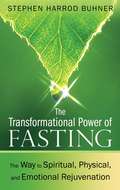- Table View
- List View
The Five Powers: A guide to personal peace and freedom
by Stephen Fulder'In a direct and lovely way, Stephen, a meditation teacher and a peacemaker in Israel and Palestine shows us how to steady our hearts, how to live and embody trust and wisdom in an uncertain world.' - Jack Kornfield, author of A Path With Heart'This book is not only a deeply wise and practical guide for spiritual awakening, it is also gorgeous! Highly recommended for all who seek the blessings of inner freedom.' - Tara Brach, the Author of Radical AcceptanceTRUST + ENERGY + MINDFULNESS + CALM + WISDOMIt can all feel a bit too much. We find ourselves occupied, morning to night, with reacting, responding and coping with uncontrollable and often challenging circumstances. How can we rise above stress, anxiety and frustration? How do we perform a restart? Is it possible to radically transform our daily life? And how might we invite deeper meaning and freedom into our lives? For many, the gateway to the Buddhist teachings is Mindfulness. And Mindfulness is indeed one of the Five Powers that are regarded as the original teachings of the Buddha: 1. Trust 2. Energy3. Mindfulness4. Calm5. WisdomHow do these Five Powers help us to discover personal peace and freedom? We begin with Trust, a leap of faith, letting go of the sides and getting into the stream of life. But in order to swim well, we also need Energy to overcome resistance and keep going. Mindfulness brings our awareness to where we are on the path in each moment, to notice life in its rich detail. Inner freedom expands, amplified by the peaceful power of Calm. We focus on what is right in front of us, we listen intently, we are patient with life. And Wisdom provides our inner knowing, our compass. With stunning artwork throughout by the acclaimed artist Alessandro Sanna, The Five Powers is a guide for those who seek the freedom to be themselves, to love fully and to dance with the unexpected and embrace the everyday.
The Five Powers: A guide to personal peace and freedom
by Stephen FulderMINDFULNESS + TRUST + ENERGY + SERENITY + WISDOMIt can all feel a bit too much. We find ourselves occupied, morning to night, with reacting, responding and coping with uncontrollable and often challenging circumstances. How can we rise above stress, anxiety and frustration? How do we perform a restart? Is it possible to radically transorm our daily life? How can we invite deeping meaning and freedom into our lives? For many, the gateway to the Buddhist teachings is Mindfulness. And Mindfulness is indeed one of the Five Powers that are regarded as the original teachings of the Buddha: 1. Trust 2. Energy3. Mindfulness4. Serenity5. WisdomWhat do the Five Powers feel like on our journey and how do they help us climb? Any transformation begins with Trust, a leap of faith, letting go of the sides and getting into the stream of life, no longer trying to control where it will take us but instead experiencing every moment. We need Energy to overcome resistance and keep going, to be energised instead of drained by life. And of course Mindfulness brings our awareness into where we are on the path, to notice the rocks and flowers along the way, the important stuff. Inner freedom expands, amplified by Serenity. We focus on what is right in front of us, we listen intently, we are patient with life. And Wisdom provides our inner knowing, our compass. The Five Powers work together to help us on our way to remembering why we are here, to let go of our stories and grasp the big picture - we see how the world and ourselves make each other. Life lives through us. The Five Powers is the perfect guide and inspiration for those seeking happiness, contentment, and love in daily life. Its teachings will help readers to dance with the unexpected, to embrace the everyday and climb the mountain.(p) 2019 Octopus Publishing Group
Moral Damages: The Case for Abolishing Morality
by Stephen G. MorrisDespite the wide-ranging differences in people’s moral perspectives, there is near universal agreement that the world is generally better off when people allow morality to dictate their actions. But what if this view is wrong? What if the very thing that most people think is key to improving human relations is actually a primary contributor to unnecessary suffering and strife? In this book, Stephen G. Morris uses the latest empirical evidence to argue that eliminating all vestiges of morality from our lives (a position known as moral abolitionism) would likely yield benefits on both an individual and a societal level. Though the primary aim is to build a pragmatic case for why we ought to dispense with morality, Morris first argues that there are theoretical reasons for rejecting morality since we lack compelling arguments for the existence of moral facts. From there, he cites extensive evidence suggesting that morality does more harm than good through its negative influence on violence, politics, and personal relationships. Following a discussion of how we have at our disposal the necessary resources (i.e., empathy, prudential self-interest, and reason) to benefit humanity in a world without morality, Morris concludes by offering some specific steps societies could take to help eliminate morality’s corrupting influence and to improve human relations.
Dignity for Deeply Forgetful People: How Caregivers Can Meet the Challenges of Alzheimer's Disease
by Stephen G. PostFor caregivers of deeply forgetful people: a book that combines new ethics guidelines with an innovative program on how to communicate and connect with people with Alzheimer's.How do we approach a "deeply forgetful" loved one so as to notice and affirm their continuing self-identity? For three decades, Stephen G. Post has worked around the world encouraging caregivers to become more aware of—and find renewed hope in—surprising expressions of selfhood despite the challenges of cognitive decline. In this book, Post offers new perspectives on the worth and dignity of people with Alzheimer's and related disorders despite the negative influence of "hypercognitive" values that place an ethically unacceptable emphasis on human dignity as based on linear rationality and strength of memory. This bias, Post argues, is responsible for the abusive exclusion of this population from our shared humanity. With vignettes and narratives, he argues for a deeper dignity grounded in consciousness, emotional presence, creativity, interdependence, music, and a self that is not "gone" but "differently abled." Post covers key practical topics such as: • understanding the experience of dementia• noticing subtle expressions of continuing selfhood, including "paradoxical lucidity" • perspectives on ethical quandaries from diagnosis to terminal care and everything in between, as gleaned from the voices of caregivers• how to communicate optimally and use language effectively • the value of art, poetry, symbols, personalized music, and nature in revealing self-identity• the value of trained "dementia companion" dogsAt a time when medical advances to cure these conditions are still out of reach and the most recent drugs have shown limited effectiveness, Post argues that focusing discussion and resources on the relational dignity of these individuals and the respite needs of their caregivers is vital. Grounding ethics on the equal worth of all conscious human beings, he provides a cautionary perspective on preemptive assisted suicide based on cases that he has witnessed. He affirms vulnerability and interdependence as the core of the human condition and celebrates caregivers as advocates seeking social and economic justice in an American system where they and their loved ones receive only leftover scraps. Racially inclusive and grounded in diversity, Dignity for Deeply Forgetful People also includes a workshop appendix focused on communication and connection, "A Caregiver Resilience Program," by Rev. Dr. Jade C. Angelica.
Chasing Men on Fire: The Story of the Search for a Pain Gene
by Stephen G. WaxmanA thirty-year quest, from genes to pain-signaling neurons to people with a rare genetic disorder that makes them feel they are on fire. Two soldiers, both with wounds injuring the same nerve, show very different responses: one is disabled by neuropathic pain, unable to touch the injured limb because even the lightest contact triggers excruciating discomfort; the other notices numbness but no pain at all. Could the difference lie in their genes? In this book, described in the foreword by Nobel Laureate James Rothman as “so well written that it reads like a detective novel,” Stephen Waxman recounts the search for a gene that controls pain—a search spanning more than thirty years and three continents. The story moves from genes to pain-signaling neurons that scream when they should be silent to people with a rare genetic disorder who feel they are on fire. Waxman explains that if pain-signaling neurons are injured by trauma or disease, they can become hyperactive and send pain signals to the brain even without external stimulus. Studying the hyperactive mutant pain gene in man on fire syndrome has pointed the way to molecules that produce pain more broadly within the general population, in the rest of us. Waxman's account of the many steps that led to discovery of the pain gene tells the story behind the science, of how science happens.
Ophthalmology Made Ridiculously Simple
by Stephen Goldberg William TrattlerAll the ophthalmology most vital for the non-ophthalmologist. This book gives strong emphasis to common disorders, their diagnosis and management at the level of the non-ophthalmologist - up to the point of referral. Included among these are refractive problems, ocular inflammation, trauma, amblyopia, strabismus, and a variety of additional disorders that causes diminished vision or ocular discomfort. Includes interactive download from MedMaster's website with atlas of ophthalmic diseases, as well as movies of common ocular surgical procedures (cataract surgery, lens implantation, Lasik, Lasek, intacs surgery).
Cannabis y espiritualidad: Guía para el explorador de un aliado vegetal ancestral
by Stephen Gray• Incluye capítulos de 18 voces autorizadas e influyentes del movimiento cannábico moderno, incluidos Kathleen Harrison, Joan Bello, Hamilton Souther, Steven Hager, Chris Bennett, Dee Dussault, Jeremy Wolff y Roger Christie• Explora el uso de la marihuana en una amplia gama de prácticas espirituales, incluida la meditación, yoga, canto, visualización, chamanismo, ceremonias grupales, trabajo con otros enteógenos y como ayuda creativaVerdaderamente, una medicina para el cuerpo y el alma, uno de los mayores dones del cannabis es su notable potencial para la sanación y el despertar espiritual. En esta guía autorizada, el editor Stephen Gray y otras 17 voces influyentes del movimiento cannábico moderno exploran los beneficios espirituales del cannabis y ofrecen orientación sobre cómo interactuar con la inteligencia de esta planta aliada, compañera y defensora de la humanidad durante milenios.Al explorar la espiritualidad del cannabis en la práctica, los capítulos de Gray examinan las dosis, cepas y métodos de ingesta; el uso del cannabis para abrir canales creativos; cómo realizar ceremonias grupales con cannabis, y las precauciones y contraindicaciones para su consumo. Chris Bennett habla sobre el uso religioso y ritual del cannabis desde los tiempos prebíblicos hasta el presente, Joan Bello sobre la marihuana y la conexión cuerpo-mente, Dee Dussault sobre el ganja yoga, Kathleen Harrison sobre la coevolución de la humanidad con el cannabis, y el chamán cannábico Hamilton Souther sobre cómo trabajar con el espíritu del cannabis. Los colaboradores exploran el futuro espiritual de esta planta aliada, así como el uso ritual del cannabis por parte de los rastafaris de Jamaica y los sadhus de la India. Los capítulos del chamán brasileño de ayahuasca Mariano da Silva y del aprendiz de ayahuasca Francisco presentan conocimientos sobre la combinación de las medicinas sacramentales del cannabis y la ayahuasca.Al revelar el potencial de "la planta del pueblo" para mejorar una amplia variedad de prácticas espirituales, como la meditación, el yoga, el canto, la visualización, el chamanismo, el trabajo espiritual y las exploraciones con otros enteógenos, esta guía muestra cómo el cannabis es un aliado eficaz en el viaje de despertar, probando que es capaz de desbloquear la energía receptiva en todos nosotros para ayudar a sentirnos conectados con la naturaleza, con los demás y con nosotros mismos.
How Psychedelics Can Help Save the World: Visionary and Indigenous Voices Speak Out
by Stephen Gray• With contributions from Christopher Bache, Zoe Helene, Dennis McKenna, Martina Hoffmann, The Dank Duchess, Jamie Wheal, Grandmother Maria Alice, and others• Explores the immense healing intelligence of nature, the wisdom of ancient Indigenous prophecies and shamanic practices, the importance of the Divine Feminine for environmental regeneration, and the crucial role of psychedelic and entheogenic plants in initiating transformations of consciousnessExploring the way forward for humanity in the face of unprecedented crisis, more than 25 contributors show how the wisdom of Indigenous peoples and the power of psychedelics can help us enact the radical shift in consciousness necessary to navigate the collapse of the old world order and the birth of a new consciousness.We hear from psychedelic visionaries Christopher Bache, Zoe Helene, Wade Davis, Chris Kilham, Laurel Sugden, and others on the promise of psychedelic medicines for spiritual and healing work. We learn about Indigenous stories to support our transformation from Native American leader Solana Booth, ancestral memory from Grandmother Maria Alice Campos Freire, cannabis&’s role in world building from Minelli Eustàcio-Costa, the ritual roots of talking plants from Michael Stuart Ani, and alchemy across the arc of time from shaman Ya&’Acov Darling Khan. We also hear from cannabis grower The Dank Duchess; Tyson Yunkaporta, Australian Aboriginal artist and scholar; visionary artist Martina Hoffmann; activist Duane Elgin; Kohenet Rachel Kann, ordained Jewish priestess and ceremonialist; and several other wise leaders for our time. Throughout these profound essays we are reminded of the immense healing intelligence of our plant allies, of the wisdom of shamanic practices, of the importance of the Divine Feminine for environmental regeneration, and of the crucial role of entheogenic plants in initiating transformations of consciousness and healing our world&’s collective disconnection from Spirit.
Psychedelic Mystery Traditions: Spirit Plants, Magical Practices, and Ecstatic States
by Stephen Gray Thomas HatsisA comprehensive look at the long tradition of psychedelic magic and religion in Western Civilization • Explores the use of psychedelics and entheogens from Neolithic times through Antiquity, the Middle Ages, and the Renaissance to the Victorian era and beyond • Reveals how psychedelics were integrated into pagan and Christian magical practices and demonstrates how one might employ a psychedelic agent for divination, sex magic, alchemy, communication with gods, and more • Examines the role of entheogens in the Mysteries of Eleusis in Greece, the worship of Isis in Egypt, the Dionysian mysteries, and the magical practices of the Thessalian witches as well as Jewish, Roman, and Gnostic traditions Unbeknownst--or unacknowledged--by many, there is a long tradition of psychedelic magic and religion in Western civilization. As Thomas Hatsis reveals, the discovery of the power of psychedelics and entheogens can be traced to the very first prehistoric expressions of human creativity, with a continuing lineage of psychedelic mystery traditions from antiquity through the Renaissance to the Victorian era and beyond. Describing how, when, and why different peoples in the Western world utilized sacred psychedelic plants, Hatsis examines the full range of magical and spiritual practices that include the ingestion of substances to achieve altered states. He discusses how psychedelics facilitated divinatory dream states for our ancient Neolithic ancestors and helped them find shamanic portals to the spirit world. Exploring the mystery religions that adopted psychedelics into their occult rites, he examines the role of entheogens in the Mysteries of Eleusis in Greece, the worship of Isis in Egypt, and the psychedelic wines and spirits that accompanied the Dionysian mysteries. The author investigates the magical mystery traditions of the Thessalian witches as well as Jewish, Roman, and Gnostic traditions. He reveals how psychedelics were integrated into pagan and Christian magical practices and demonstrates how one might employ a psychedelic agent for divination, magic, alchemy, or god and goddess invocation. He explores the use of psychedelics by Middle Eastern and medieval magicians and looks at the magical use of cannabis and opium from the Crusaders to Aleister Crowley. From ancient priestesses and Christian gnostics, to alchemists, wise-women, and Victorian magicians, Hatsis shows how psychedelic practices have been an integral part of the human experience since Neolithic times.
The Thin Commandments Diet: The Ten No-Fail Strategies for Permanent Weight Loss
by Stephen GulloBestselling author of Thin Tastes Better, Dr. Stephen Gullo lets you in on his unique program that has a success rate almost 15 times higher than the national average and has helped patients lose more than 100 pounds and maintain the weight loss for more than 5 years. At Dr. Gullo's Institute for Health and Weight Sciences in New York City, patients wait up to 6 months for an appointment and pay over $1,000 an hour for the secrets he imparts in this book.Dr. Gullo's program, incorporating his more than 25 years of clinical experience, features The Ten Thin Commandments that govern all eating habits and his easy-to-follow "ABC Diet" plan.In Part One, Dr. Gullo shares his Thin Commandments, including: • Think historically, not just calorically-identify trigger foods that can undermine weight loss • Slips should teach you, not defeat you-uncover the "24-hour secret" and never gain weight from bingeing again • Success is about substitution, not denial-discover the 10 most common diet-busting foods and their satisfying substitutesIn Part Two, Dr. Gullo outlines his simple ABC Diet plan. He takes the guesswork out of dieting and offers a three-step program, which begins with a 10-day turbocharge plan that helps melt away pounds quickly and easily. The ABC Diet is complete with menu plans and shopping lists.
Thin Tastes Better
by Stephen GulloDr. Stephen Gullo, one of America's most well known diet gurus, shares his new and ground-breaking model for weight control and his dramatically effective Anti-Deprivation Diet. Advice that clients pay thousands of dollars for is offered here.From the Hardcover edition.
Sacred Plant Medicine: Explorations in the Practice of Indigenous Herbalism
by Stephen H. BuhnerIn Sacred Plant Medicine Stephen Buhner examines how indigenous peoples throughout the world learned the use of plant medicines. He explores the sacred dimension of plant and human interactions--a territory where humans experience communications from plants as expressions of Spirit. Indigenous peoples were clear, and Buhner's firsthand accounts bear this out, they did not learn the uses of plant medicines through trial and error but directly from the plants themselves. Sacred Plant Medicine develops a map of the territory of plant intelligence and the human interaction with it by focusing on the earliest and most basic human form of that contact between differing intelligences. For each healing plant described in the book, he presents medicinal uses, preparatory guidelines, and ceremonial elements such as prayers and medicine songs associated with the use of the plant. Each of us can communicate with the plants and become one with them.
Healing Lyme Disease Coinfections: Complementary and Holistic Treatments for Bartonella and Mycoplasma
by Stephen Harrod BuhnerA guide to the natural treatment of two of the most common and damaging coinfections of Lyme disease--Bartonella and Mycoplasma • Reveals how these conditions often go undiagnosed, complicate Lyme treatment, and cause a host of symptoms--from arthritis to severe brain dysfunction • Outlines natural treatments for both infections, with herbs and supplements for specific symptoms and to combat overreactions of the immune system • Reviews the latest scientific research on Bartonella and Mycoplasma coinfections and how treatment with antibiotics is often ineffective Each year Harvard researchers estimate there are nearly 250,000 new Lyme disease infections--only 10 percent of which will be accurately diagnosed. One of the largest factors in misdiagnosis of Lyme is the presence of other tick-borne infections, which mask or aggravate the symptoms of Lyme disease as well as complicate treatment. Two of the most common and damaging Lyme coinfections are Bartonella and Mycoplasma. Nearly 35 million people in the United States are asymptomatically infected with each of these pathogens, and at least 10 percent will become symptomatic every year--with symptoms ranging from arthritis to severe brain dysfunction. Distilling hundreds of peer-reviewed journal articles on the latest scientific research on Bartonella, Mycoplasma, and Lyme disease, Stephen Buhner examines the complex synergy between these infections and reveals how all three can go undiagnosed or resurface after antibiotic treatment. He explains how these coinfections create cytokine cascades in the body--essentially sending the immune system into an overblown, uncontrolled response in much the same way that rheumatoid arthritis or cancer can. Detailing effective natural holistic methods centered on herbs and supplements, such as the systemic antibacterial herb Sida acuta, which acts to protect blood cells from invading organisms, he reveals how to treat specific symptoms, interrupt the cytokine cascades, and bring the immune system back into balance as well as complement ongoing Lyme disease treatments.
Healing Lyme: Natural Prevention and Treatment of Lyme Borreliosis and Its Coinfections
by Stephen Harrod BuhnerDespite Centers for Disease Control estimates that only 20,000 new Lyme disease infections occur each year, the true figure, as Harvard medical school researchers have found, nearly approaches 200,000. Symptoms run from mild lethargy to severe arthritis to incapacitating mental dysfunction. And despite medical pronouncements to the contrary, extensive research has found that tests for the disease are not very reliable and antibiotics are only partially effective; up to 35 percent of those infected will not respond to treatment or will relapse. The spirochetes that cause Lyme are stealth pathogens-they can hide within cells or alter their form so that antibiotics cannot affect them. Lyme disease is, in fact, a potent, emerging epidemic disease for which technological medicine is only partially effective. Healing Lyme examines the leading, scientific research on Lyme infection, its tests and treatments, and outlines the most potent herbal medicines and supplements that offer help-either alone or in combination with antibiotics-for preventing and healing the disease. It is the essential guide to Lyme infection and its treatment.
Herbal Antibiotics, 2nd Edition: Natural Alternatives for Treating Drug-resistant Bacteria
by Stephen Harrod BuhnerWith antibiotic-resistant infections on the rise, herbal remedies present a naturally effective alternative to standard antibiotics. Herbal expert Stephen Harrod Buhner explains the roots of antibiotic resistance, explores the value of herbal treatments, and provides in-depth profiles of 30 valuable plants, noting the proper dosages, potential side effects, and contraindications of each.
Herbal Antivirals, 2nd Edition: Natural Remedies for Emerging & Resistant Viral Infections
by Stephen Harrod BuhnerViruses are smart, mutating, and becoming resistant to antiviral pharmaceuticals. Global crises such as COVID-19, SARS, and dengue feaver spread more quickly than we can develop medicines to fight them. Herbalist and best-selling author Stephen Harrod Buhner has studied the antiviral properties of plants for many years. In this comprehensive guide, he profiles the plants that have proven most effective in fighting viral infections and provides in-depth instructions for preparing and using formulations to address the most common infections and strengthen immunity, safely and naturally. The updated 2nd edition includes an expanded guide to COVID-19, including a review of the most up-to-date medical research and the plant medicines that have been found to be most potent in preventing infection, lessening the impact of the virus on the body, and addressing longer-term effects and co-infections. This publication conforms to the EPUB Accessibility specification at WCAG 2.0 Level AA.
Herbal Antivirals: Natural Remedies for Emerging & Resistant Viral Infections
by Stephen Harrod BuhnerTake control of your health with herbal antivirals. As traditional medications become less effective against today’s potent and aggressive viruses, natural alternatives are proving capable of fighting off many common viral threats. Stephen Harrod Buhner offers in-depth instructions on how to prepare and use herbal formulations to prevent and treat infections such as SARS, influenza, and encephalitis. These natural remedies will fight off disease and strengthen your immune system, keeping your family healthy and happy.
Invasive Plant Medicine: The Ecological Benefits and Healing Abilities of Invasives
by Stephen Harrod Buhner Timothy Lee ScottThe first book to demonstrate how plants originally considered harmful to the environment actually restore Earth’s ecosystems and possess powerful healing properties • Explains how invasive plants enhance biodiversity, purify ecosystems, and revitalize the land • Provides a detailed look at the healing properties of 25 of the most common invasive plants Most of the invasive plant species under attack for disruption of local ecosystems in the United States are from Asia, where they play an important role in traditional healing. In opposition to the loud chorus of those clamoring for the eradication of all these plants that, to the casual observer, appear to be a threat to native flora, Timothy Scott shows how these opportunistic plants are restoring health to Earth’s ecosystems. Far less a threat to the environment than the cocktails of toxic pesticides used to control them, these invasive plants perform an essential ecological function that serves to heal both the land on which they grow and the human beings who live upon it. These plants remove toxic residues in the soil, providing detoxification properties that can help heal individuals. Invasive Plant Medicine demonstrates how these “invasives” restore natural balance and biodiversity to the environment and examines the powerful healing properties offered by 25 of the most common invasive plants growing in North America and Europe. Each plant examined includes a detailed description of its physiological actions and uses in traditional healing practices; tips on harvesting, preparation, and dosage; contraindications; and any possible side effects. This is the first book to explore invasive plants not only for their profound medical benefits but also with a deep ecological perspective that reveals how plant intelligence allows them to flourish wherever they grow.
Las enseñanzas secretas de las plantas: La inteligencia del corazón en la percepción directa de la naturaleza
by Stephen Harrod BuhnerRevela el uso de la percepción directa en la comprensión de la naturaleza, las plantas medicinales, y la sanación de las enfermedades humanas • Explora las técnicas utilizadas por los pueblos aborígenes y occidentales para aprender directamente de las propias plantas, incluidas las técnicas de Henry David Thoreau, Goethe, y Masanobu Fukuoka, autor de The One Straw Revolution [La revolución de una brizna de paja] Todos los pueblos antiguos y aborígenes afirman que sus conocimientos sobre remedios botánicos provienen de las propias plantas y no de la experimentación a través de pruebas y errores. El autor Stephen Harrod Buhner explora minuciosamente esta modalidad de cognición holística basada en el corazón a través de la obra de Luther Burbank, quien cultivó la mayoría de las plantas alimenticias que ahora consumimos sin pensar en su procedencia, y del gran poeta y científico alemán Goethe. Los lectores obtendrán los medios necesarios para recopilar información directamente del corazón de la naturaleza, aprender los usos medicinales de las plantas diagnosticar enfermedades, y comprender el proceso de creación de alma que se engendra mediante esa profunda conexión con el mundo.
Natural Remedies for Low Testosterone: How to Enhance Male Sexual Health and Energy
by Stephen Harrod BuhnerHow to maintain optimum testosterone levels for the male body through the use of herbs, nutritional supplements, and diet • Explains the phenomenon of male menopause and how to deal with it • Reveals scientific evidence of testosterone-blocking agents in the environment that alter men’s essential chemistry as they age • Presents safe, organic plant medicines that can restore optimum testosterone levels • Contains the most up-to-date natural treatments for impotence, infertility, and prostate disease The recognition of andropause, the middle-age stage in male development comparable to women’s menopause, is hampered by the lack of a clear outward manifestation of the chemistry and physiology specific to aging men. Men are still capable of reproduction well into and beyond middle age. Yet a man’s sexual desire and potency varies, often according to his testosterone level. Recent studies show that the lowered testosterone levels endemic in aging men--a gradual drop that is quite normal--are being exacerbated by environmental agents. Testosterone-blocking estrogen agents are present in insecticides, industrial materials, pharmaceuticals, and foods. Men are daily inundated with a “cocktail” of estrogen agents that alter the fine balance of testosterone that makes them male. But as recent medical research has revealed, testosterone replacement therapy with Low T drugs is not a good option because of the increased risk of cardiovascular problems, such as heart attack and stroke, and because the body can become dependent on pharmaceutical testosterone and stop producing any on its own. In this updated edition of The Natural Testosterone Plan, Stephen Harrod Buhner shows why men need help to maintain their testosterone levels as they age and explains how naturally occurring phytoandrogens--plant medicines that contain male hormones--can safely remedy the depletion exerted by the environment. Buhner details how each phytoandrogen works, when its use is indicated, and the most appropriate method of application, providing all men with safe, natural, and effective means of maintaining optimum testosterone levels well into old age.
Natural Treatments for Lyme Coinfections: Anaplasma, Babesia, and Ehrlichia
by Stephen Harrod BuhnerA guide to the natural treatment of three coinfections of Lyme disease• Reviews the latest scientific research on Babesia, Ehrlichia, and Anaplasma• Reveals how these three conditions often go undiagnosed, complicate the treatment of Lyme disease, and cause symptoms from headache to seizures• Outlines effective natural treatments with herbs and supplements for specific symptoms and to combat overreactions of the immune system and the inflammation responseHarvard researchers estimate there are nearly 250,000 new Lyme disease infections each year--only 10 percent of which will be accurately diagnosed. One of the largest factors in misdiagnosis of Lyme is the presence of other tick-borne infections, which mask or aggravate the symptoms of Lyme disease as well as complicate treatment. Three newly emergent Lyme coinfections are Babesia, Ehrlichia, and Anaplasma. Tens of thousands of people are known to be asymptomatically infected and at least ten percent will become symptomatic this year--with symptoms ranging from chronic headache and arthritis to seizures. Distilling the latest scientific research on Babesia, Ehrlichia, Anaplasma, and Lyme disease, Stephen Buhner examines the complex synergy between these infections and reveals how they can go undiagnosed or resurface after antibiotic treatment. He explains how these organisms create cytokine cascades in the body--essentially sending the immune system into an overblown, uncontrolled inflammatory response in much the same way rheumatoid arthritis or cancer can. Providing an in-depth guide for those suffering from Babesia, Ehrlichia, or Anaplasma infection as well as for clinicians who work with those infected by these organisms, Buhner details effective natural holistic methods centered on herbs and supplements, such as Ashwaganda and Chinese Skullcap, and reveals how to treat specific symptoms, interrupt the cytokine cascades, reduce inflammation, and bring the immune system back into balance. He explains how these natural methods not only complement conventional Lyme disease treatments involving antibiotics and other pharmaceuticals but also provide relief when other forms of treatment have failed.
Plant Intelligence and the Imaginal Realm: Beyond the Doors of Perception into the Dreaming of Earth
by Stephen Harrod BuhnerA manual for opening the doors of perception and directly engaging the intelligence of the Natural World • Provides exercises to directly perceive and interact with the complex, living, self-organizing being that is Gaia • Reveals that every life form on Earth is highly intelligent and communicative • Examines the ecological function of invasive plants, bacterial resistance to antibiotics, psychotropic plants and fungi, and the human species In Plant Intelligence and the Imaginal Realm, Stephen Harrod Buhner reveals that all life forms on Earth possess intelligence, language, a sense of I and not I, and the capacity to dream. He shows that by consciously opening the doors of perception, we can reconnect with the living intelligences in Nature as kindred beings, become again wild scientists, nondomesticated explorers of a Gaian world just as Goethe, Barbara McClintock, James Lovelock, and others have done. For as Einstein commented, “We cannot solve the problems facing us by using the same kind of thinking that created them.” Buhner explains how to use analogical thinking and imaginal perception to directly experience the inherent meanings that flow through the world, that are expressed from each living form that surrounds us, and to directly initiate communication in return. He delves deeply into the ecological function of invasive plants, bacterial resistance to antibiotics, psychotropic plants and fungi, and, most importantly, the human species itself. He shows that human beings are not a plague on the planet, they have a specific ecological function as important to Gaia as that of plants and bacteria. Buhner shows that the capacity for depth connection and meaning-filled communication with the living world is inherent in every human being. It is as natural as breathing, as the beating of our own hearts, as our own desire for intimacy and love. We can change how we think and in so doing begin to address the difficulties of our times.
Remedios naturales para aumentar la testosterona: Cómo mejorar la salud sexual y la energía masculina
by Stephen Harrod BuhnerCómo mantener los niveles óptimos de testosterona en el hombre mediante el uso de hierbas, suplementos nutricionales y la alimentación• Revela pruebas científicas sobre agentes ambientales que bloquean la testosterona y que alteran el funcionamiento químico del cuerpo masculino en la medida en que este envejece • Presenta medicinas herbarias orgánicas y seguras que pueden restablecer los niveles óptimos de testosterona• Contiene los tratamientos naturales más recientes para tratar la impotencia, la infertilidad y las disfunciones de próstataLa identificación de la andropausia, la etapa que ocurre durante la madurez en los hombres y que es comparable a la menopausia femenina, se ve obstaculizada por la falta de una clara manifestación externa en la química y fisiología propias de los individuos de edad avanzada. Los hombres son capaces de fecundar más allá de la edad madura. Sin embargo, su deseo y potencia sexual varían, a menudo de acuerdo con su nivel de testosterona. Estudios recientes muestran que los bajos niveles de testosterona prevalentes en varones de edad avanzada--un descenso gradual que es bastante normal--se ven agravados por elementos del medio ambiente. Pero, como indican investigaciones médicas recientes, la terapia de reemplazo de testosterona con dosis bajas de la hormona no es una opción adecuada porque aumenta el riesgo de problemas cardiovasculares como el infarto del miocardio o derrames cerebrales y, además, porque el cuerpo puede hacerse dependiente de la testosterona farmacéutica y dejar de producirla por sí mismo.En esto libro, Stephen Harrod Buhner muestra por qué los hombres necesitan ayuda para mantener los niveles de testosterona a medida en que envejecen y explica cómo fitoandrógenos naturales--plantas medicinales que contienen hormonas masculinas--pueden corregir sin riesgos la disminución de testosterona que ejerce el medio ambiente. Buhner detalla cómo funciona cada fitoandrógeno, cuándo puede usarse y el método más apropiado de empleo, de forma que proporcione a todos los hombres medios seguros, naturales y eficaces que conserven sus niveles óptimos de testosterona hasta bien entrada la tercera edad.
The Secret Teachings of Plants: The Intelligence of the Heart in the Direct Perception of Nature
by Stephen Harrod BuhnerReveals the use of direct perception in understanding Nature, medicinal plants, and the healing of human disease• Explores the techniques used by indigenous and Western peoples to learn directly from the plants themselves, including those of Henry David Thoreau, Goethe, and Masanobu Fukuoka, author of The One Straw Revolution• Contains leading-edge information on the heart as an organ of perceptionAll ancient and indigenous peoples insisted their knowledge of plant medicines came from the plants themselves and not through trial-and-error experimentation. Less well known is that many Western peoples made this same assertion. There are, in fact, two modes of cognition available to all human beings--the brain-based linear and the heart-based holistic. The heart-centered mode of perception can be exceptionally accurate and detailed in its information gathering capacities if, as indigenous and ancient peoples asserted, the heart’s ability as an organ of perception is developed.Author Stephen Harrod Buhner explores this second mode of perception in great detail through the work of numerous remarkable people, from Luther Burbank, who cultivated the majority of food plants we now take for granted, to the great German poet and scientist Goethe and his studies of the metamorphosis of plants. Buhner explores the commonalities among these individuals in their approach to learning from the plant world and outlines the specific steps involved. Readers will gain the tools necessary to gather information directly from the heart of Nature, to directly learn the medicinal uses of plants, to engage in diagnosis of disease, and to understand the soul-making process that such deep connection with the world engenders.
The Transformational Power of Fasting: The Way to Spiritual, Physical, and Emotional Rejuvenation
by Stephen Harrod BuhnerFasting practices to reconnect with the sacred, regain a sense of your life’s purpose, and heal physically and emotionally • Details what to expect during your fast physically, emotionally, and spiritually • Provides step-by-step guidelines on preparing for the fast, how long you should fast, what you can and can’t do during the fast, and how to end your fast • Explains how fasting can help or heal many chronic conditions, such as type II diabetes, hypertension, cardiovascular disease, arthritis, psoriasis, and insomnia For millennia humans have fasted for spiritual, emotional, and physical reasons--as a way to heal their bodies, reconnect to the sacred, regain a sense of life’s purpose, and allow their souls to detoxify. We are evolutionarily designed to fast, and the body knows how to do it very well. Fasting allows the body and all its systems to rest, purify, and heal. During a fast, the body enters the same cleansing and healing cycle it normally enters during sleep. As a fast progresses, the body consumes everything that is not essential to bodily functioning--including bacteria, viruses, fibroid tumors, waste products in the blood, buildup around the joints, and stored fat--and the mind and heart release their toxic buildup as well. As Stephen Harrod Buhner reveals, in order to be truly transformed, you must first empty yourself. Offering step-by-step guidelines to fully prepare yourself for a deep fast, Buhner explores what to expect during and after spiritual, emotional, and physical fasting and detoxification. He details the necessary dietary and mental preparations leading up to your fast, what you can and can’t do during a fast, and how to end your fast. He also explains how to plan the length of your fast and how to choose between a water fast, a juice fast, or a mono-diet fast. Revealing how fasting can help or heal many chronic conditions, such as type II diabetes, childhood seizures, hypertension, cardiovascular disease, arthritis, psoriasis, insomnia, and fibromyalgia, Buhner shows fasting as a way to truly inhabit the body, to experience its sacredness, and to activate its deep capabilities for self-healing.
